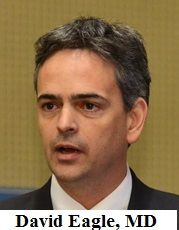Article
Cancer Care Has Not Overtaken Overall Healthcare Costs, Clarifies Milliman Study
Author(s):
The study, commissioned by the Community Oncology Alliance, has found that overall costs for Medicare and commercial health plan enrollees have been increasing at the same rate as the cost of treating patients with cancer. This contradicts the popular notion that cancer care costs have far outpaced overall healthcare spending.
A Milliman study commissioned by the Community Oncology Alliance (COA) has found that overall costs for Medicare and commercial health plan populations have been increasing at the same rate as the cost of treating patients with cancer. This contradicts the popular notion that cancer care costs have far outpaced overall healthcare spending.

Will the cost of cancer care be unsustainable for healthcare in the United States? That seems to be the underlying question that the current study expected to answer. With a growing number of cancer survivors in the country (an estimated 14.5 million in 2014 according to the American Cancer Society, and rising)—thanks to longevity, earlier detection, and improved treatment options—long-term treatment and care could be a burden, especially considering the fact that a majority of innovative therapies are biologicals, and they don’t come cheap. Hovering around $124 billion in 2010, spending on cancer treatment is expected to touch $173 billion by 2020—a nearly 40% increase. Several policy issues have also been responsible for these growing costs, including rapid consolidation and shift in the site of care.
Acturial researchers at Milliman compared overall and component costs of care among cancer and non-cancer patient populations for the period between 2004 and 2014. When comparing claims data (Medicare and commercial) to generate per-patient costs of actively treated cancer patients and non-actively treated cancer patients during the same decade, the researchers found that:
- Per-patient cost was similar between the cancer and non-actively treated cancer patients
- With an increasing number of biologicals entering the oncology market, the per-patient cost of chemotherapy has been rising much more than other components of care for cancer patients.
- There is an increasing trend of shift in the site of service—from lower-cost physician office to higher-cost hospital outpatient departments (HOPDs).
Debra Patt, MD, MPH, MBA, practicing oncologist at Texas Oncology and COA board and study team member, said in a statement that the Milliman report has dashed a commonly held belief that cancer care costs have been growing at a disproportionate rate compared with the rest of healthcare. “It is evident that per capita spending in oncology is less when patients are treated in a physician office setting in comparison with the hospital outpatient department. I hope with the advent of new initiatives such as the Oncology Medical Home, pathway management, and other value-based care initiatives, we should see even more success in providing high value care for our patients,” Pratt added.

The report also highlighted the following:
- The rate of cancer prevalence during 2004 to 2014 was more than the contribution of cancer patients’ cost to the total population spend.
- In the actively-treated population, the proportion of spending for anticancer agents increased while the proportion of spending on inpatient care declined Spending on biological chemotherapies increased by 6% in the Medicare population and by 5% in those enrolled in commercial plans.
- The decade of study saw a 30% rise in chemotherapy infusions being administered in the more expensive HOPDs, and a corresponding decrease in the physician office settings.
- If the site-of service for chemotherapy infusion had not shifted to HOPDs over the study period, it would have resulted in the following savings: $51,900 per actively treated Medicare fee-for-service patient instead of $56,100 (a 7.5% saving) $89,900 per commercial health plan—enrolled patient instead of $95,400 (5.8% saving)
David Eagle, MD, a practicing oncologist at Lake Norman Oncology, also a COA board and study team member, emphasized that drug prices are only a part of the complex puzzle of the cost of cancer care. Eagle believes, “If we are to make any meaningful progress in controlling spending on cancer care we need to take a much more holistic look at all of the cost drivers, including site of service differences.”
The report consolidating the findings of the study can be accessed here.





